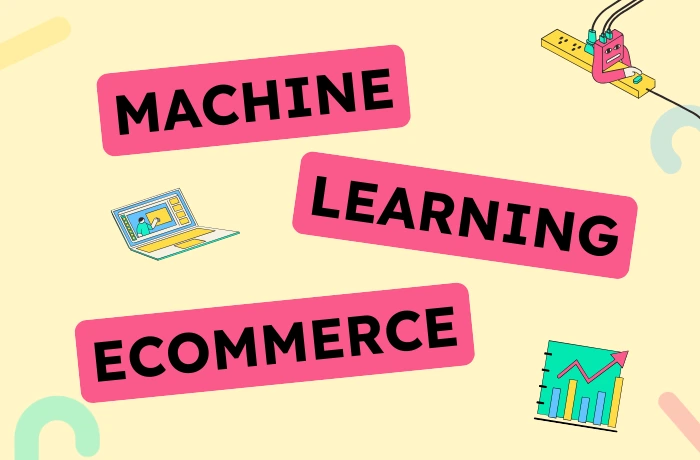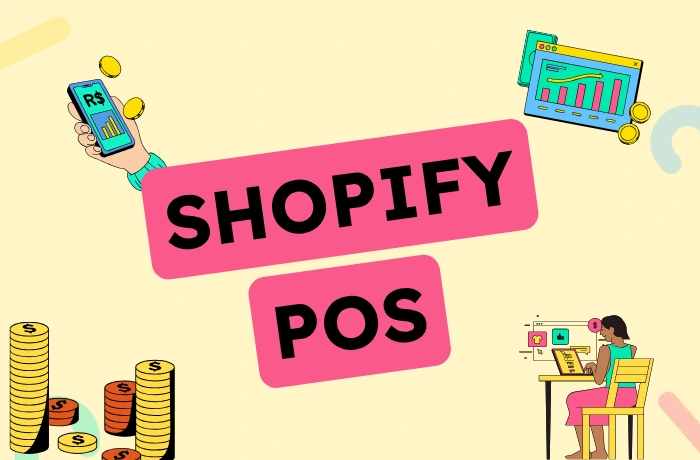The way we shop online is changing.
With more data, higher customer expectations, and growing pressure to stay competitive, ecommerce brands need smarter tools.
That is where machine learning comes in. It is not just a buzzword.
It is a powerful shift that is redefining how businesses understand, engage, and retain their customers.
Let’s break down what it really means and why it matters.
What is Machine Learning in ecommerce?
Machine learning in ecommerce is all about using data to improve how people shop and how brands sell. Instead of relying on fixed rules, it uses algorithms that analyse customer behaviour, spot patterns, and make decisions automatically.
The more it learns from real actions like clicks, searches, and purchases, the more accurate it becomes.
This technology powers features you probably use every day.
Think personalised product recommendations, real-time pricing, intelligent search, fraud detection, and even stock forecasting.
The goal is simple: deliver a more relevant and seamless experience that drives more engagement, conversions, and loyalty.
AI vs Machine Learning in ecommerce
Artificial intelligence is the wider concept.
It refers to systems designed to imitate human thinking, like understanding language, recognising images, or making decisions.
Machine learning is a specific branch of AI that focuses on learning from data to improve performance without being manually updated.
In the ecommerce world, both AI and machine learning show up often.
AI runs things like customer service chatbots or voice search.
Machine learning kicks in when those tools start improving based on customer behaviour.
For example, a chatbot that gives the same answers every time is powered by AI, but one that gets better at handling queries based on past conversations is using machine learning.
The key difference comes down to adaptability.
Machine learning evolves with the data.
And that adaptability is what makes it so powerful for personalising the shopping experience.
How does machine learning work in ecommerce?
Machine learning works by training algorithms on large volumes of customer data.
That can include browsing history, purchase habits, time spent on product pages, and more.
Once trained, these models start making predictions and triggering actions.
They might recommend a product, highlight a discount, or flag unusual behaviour during checkout.
The system keeps learning as it goes.
If someone regularly shops for beauty products on Fridays, it can adjust timing and messaging automatically.
If a customer drops off after viewing a certain item, it can help the brand retarget with the right content.
All of this depends on data quality.
The more structured and reliable your data, the better the results.
That is why more and more brands are investing in better data collection, CRM integration, and clean analytics setups.
Because the smarter your data, the stronger your machine learning impact.
3 benefits of Machine Learning for ecommerce retailers
Machine learning is no longer just a nice-to-have.
It plays a central role in helping ecommerce brands scale personalisation, make smarter decisions, and turn customer data into business results.
From boosting conversion rates to improving operations, its impact is felt across the board.
From manual to predictive ecommerce
Not so long ago, segmentation was done manually.
Marketers grouped customers into broad buckets based on assumptions or past campaigns, hoping for the best.
It worked to a point, but today’s ecommerce landscape moves faster.
Machine learning brings real-time predictive insights into the picture.
Instead of relying on static rules, ML models analyse behaviour as it happens and adapt instantly.
Think live product recommendations, price adjustments, or tailored content based on in-session actions.
It goes far beyond personalisation.
Machine learning supports automated decision-making across the entire customer journey, from acquisition and engagement to conversion and retention.
It helps teams react faster, optimise at scale, and reduce reliance on guesswork.
Understanding customers on a deeper level
Success in ecommerce comes down to how well you know your customers.
Machine learning goes way beyond traditional analytics, uncovering deep behavioural patterns.
It can identify not just what someone bought, but when, how often, and what is likely to bring them back.
This kind of insight is essential for boosting customer lifetime value.
You can detect early signs of churn, spot high-value segments, and deliver the kind of personalised experience that keeps people engaged, even as habits shift over time.
Driving real business outcomes
Machine learning drives the metrics that matter.
More relevant recommendations increase average order value.
Smarter targeting and timing lead to better conversion rates.
Accurate forecasts reduce out-of-stock issues and unnecessary spend.
On top of that, machine learning improves operational efficiency.
It helps automate repetitive tasks like inventory planning, fraud detection, or customer support freeing your team to focus on higher-value work.
Fewer errors, faster execution, and stronger ROI.
8 ways to use Machine Learning in ecommerce
Machine learning is already reshaping how ecommerce brands operate.
It helps teams automate smarter decisions, personalise the customer journey, and unlock growth, using real data, in real time.
Here are eight powerful ways to use machine learning in your ecommerce business, with concrete examples to bring each one to life.
.webp)
1. Personalised product recommendations
Machine learning models analyse browsing behaviour, purchase history, and preferences to suggest the right products to the right people, instantly.
Example: Amazon’s homepage adapts in real time based on your viewing and buying history. ASOS uses similar algorithms to recommend clothing styles based on your preferences, size, and past orders.
2. Dynamic pricing
Instead of fixed pricing rules, machine learning adjusts prices automatically based on factors like demand, inventory, user behaviour, and competitor pricing.
Example: Walmart updates millions of product prices daily using machine learning models that monitor real-time market data. Adobe Commerce offers dynamic pricing engines that adjust based on stock and traffic.
3. Smarter On-site Search
Thanks to Natural Language Processing (NLP), search bars now understand intent, typos, and context making it easier for customers to find the right products.
Example: Algolia powers intelligent search for Shopify and other platforms, using machine learning to improve relevance over time. Google’s Retail Search solution also brings NLP and ranking models to larger retailers.
4. Inventory and supply chain optimisation
Machine learning forecasts demand with much higher accuracy, helping brands manage inventory, plan restocks, and avoid supply chain bottlenecks.
Example: Zara uses machine learning to adjust production and restocking decisions week by week. H&M relies on ML models to anticipate demand by region and weather.
5. Fraud detection and prevention
By analysing transaction data at scale, machine learning can detect and block fraudulent behaviour before it becomes a problem.
Example: Amazon Web Services (AWS) uses machine learning to offer fraud detection as a service. Salesforce Commerce Cloud integrates anomaly detection tools into its checkout process.
6. Customer churn prediction
Machine learning helps you spot early signs of churn, like fewer visits, lower spend, or no response to campaigns, and act before it’s too late.
Example: Netflix uses ML to track content engagement and flag when a subscriber is likely to cancel. Ecommerce brands can do the same with email engagement, on-site activity, or purchase frequency.
7. Marketing campaign optimisation
ML algorithms group customers based on behaviour, purchase intent, or lifecycle stage, then personalise timing, content, and channels for each segment.
Example: Brevo and Klaviyo use machine learning to optimise email and SMS delivery based on open history and predicted engagement. Meta’s ad platform also recommends audiences and creatives based on real performance data.
8. Delivery route optimisation
Machine learning helps logistics teams choose faster, more efficient delivery routes based on traffic, location, order volume, and external factors.
Example: Amazon uses route-optimisation models to cut delivery times and reduce logistics costs. Shopify’s partner network is adopting similar ML tools to streamline last-mile delivery.
Pssst... You might find this interesting!
Loyoly is integrated to Klaviyo and Brevo, and we can probably help your brand. Check out all our integrations!
Challenges of Implementing Machine Learning
As promising as machine learning is, it comes with its share of hurdles, especially for growing ecommerce brands.
From data quality to technical complexity, here are the main roadblocks retailers face when trying to adopt machine learning.
Getting the Data Right
Machine learning is only as good as the data it’s fed.
That means your customer data needs to be clean, structured, and up to date.
If your tracking is inconsistent or your CRM is full of gaps, your models won’t perform well.
And with privacy laws like GDPR and CCPA, you also need to be sure your data collection is compliant and ethical.
👉 Check our article on first party data to see how to collect it and use it
Technical Barriers and Cost
Building custom machine learning models often requires advanced skills, time, and budget, things that many small and mid-size brands just don’t have.
While more tools are offering plug-and-play ML features, getting real value from them still takes strategy and integration.
Maintaining and Improving Models
Machine learning models aren’t fire-and-forget.
They need to be tested, retrained, and fine-tuned regularly.
Customer behaviour shifts, product ranges change, and external factors (like seasonality or trends) can affect performance.
If you’re not updating your models, their accuracy drops fast.
The future of machine learning in ecommerce
Machine learning is already changing how ecommerce works but we’re just getting started.
As the technology becomes more accessible and more deeply integrated into the stack, it will power the next generation of online retail experiences.
Hyper-personalisation at scale
Forget basic name-based personalisation.
Machine learning will soon enable experiences tailored down to the individual level, based on real-time behaviour, preferences, and context.
Think homepages that fully adapt per user, or product pages that shift based on your browsing style.
AI-Generated content and dynamic merchandising
With the rise of generative AI and deep learning, ecommerce sites will go beyond static content.
Expect dynamic product descriptions, auto-generated visuals, and even AI-created promotional campaigns that test and optimise themselves.
Smarter customer journeys across channels
Machine learning will help brands unify touchpoints across email, SMS, push, and even social media.
The goal?
A consistent, data-driven journey no matter where your customer interacts, improving both experience and retention.

.png)









.png)
.png)
.png)
.png)
.png)